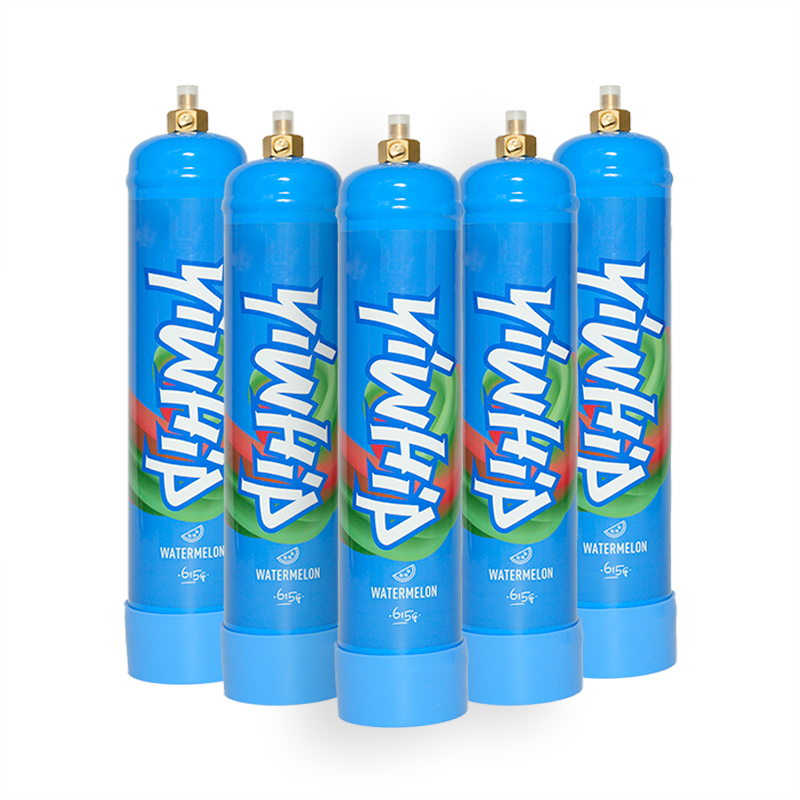Dangerous Delights: How Nitrous Oxide Misuse Is Putting Australian Kitchens at Risk
Kitchens in Australia have long relied on creative tools to enhance flavors and elevate the art of food presentation. From sous-vide immersion circulators to high-pressure siphons, culinary techniques are evolving—sometimes faster than our collective awareness of their hidden perils.
Among the least understood hazards lurking inside commercial and home kitchens today involves whipped cream dispensers and their nitrous oxide chargers (also known as whippets). While often used legally to aerate desserts or create luxurious mousses in a snap, an increasing number of incidents suggest a darker side to this innocent-seeming practice—one marked by recreational misuse and unexpected risks.
An Unintended Consequence of Convenience: Understanding the N2O Trend
The story starts not in some dimly lit alleyway, but directly from the canister resting on restaurant prep stations and home kitchen shelves alike: the whipped cream charger, a small, pressurized container releasing a controlled burst of **nitrous oxide** to rapidly whip liquid into clouds of foam. When properly sealed within the dispenser and safely integrated through standard recipe use, N₂O plays its role effectively, dissolving just enough in fat before dissipating.
The trouble arises elsewhere—in basements, garages, or even quiet corners where curiosity outpaces caution. Recreational users began inhaling N₂O gas expelled directly from disposable chargers for its mild euphoric effects—a trend colloquially dubbed as “ballooning." What many fail to consider, however, is that short-term sensations often come bundled with serious health implications. Nitrous abuse is now more prevalent than most would assume across youth cultures, music festivals, and unfortunately, even within certain professional environments like commercial kitchens themselves.
The Anatomy of a Crisis You Might Be Inviting into Your Home
Inhaling concentrated **N₂O vapors straight from whipped cream cans may feel exciting**, especially under the illusion that they’re inherently ‘clean’ due to FDA approval or everyday accessibility, particularly from retail shops and food service supply companies in **New South Wales, Victoria**, and other parts of Australia.
Rather than serving up sweet dreams or harmless giggles, this behavior could very easily spiral into irreversible damage including nerve disorders like pseudovitamin B12 deficiency. Long-time chronic abusers risk suffering myeloneuropathy, numbness and tingling limbs—all eerily similar symptoms once associated solely with neurological conditions linked to aging and malnourishment rather than recreational drug abuse. Worse yet? It’s easy to slip between social experimentation and dependency without warning.
The Ripple Effect: Public Health Challenges & Youth Safety Gaps
Australia's regulatory landscape attempts to address these rising public health concerns surrounding nitrous oxide usage. Unfortunately though, **many local councils and government authorities lag far behind emerging patterns involving its diversion**. As demand grows unchecked for bulk supplies of N₂O cartridges, enforcement struggles to contain what some describe as "kitchen counter narcotics." Meanwhile, teens remain alarmingly well-connected via peer influence and online forums which actively share DIY consumption hacks disguised as cooking tutorials or novelty stunts.
One troubling example has seen young adults repurposing metal straws connected directly onto open cartridges in misguided pursuit of a stronger inhalation rush—resulting in immediate oxygen deprivation, loss of consciousness, and potentially even death if someone is alone when accidents happen.
Laying the Ground Rules: Preventing Abuse Through Responsible Distribution
To truly tackle the underlying crisis tied to **nitrous oxide Chargers misuse in both households and restaurants alike**, several layers need recalibration. First and foremost lies the pressing need for tighter controls around sales channels. Although it's true the majority of buyers use such products responsibly—for gastronomical application in dessert-making—current loopholes still permit excessive buying sprees by those seeking alternate experiences beyond frothy lattés.
Additionally, better consumer labelling needs widespread adoption. Packaging should boldly state health warnings mirroring practices applied within tobacco, alcohol and energy drink sectors already regulated across New South Wales markets and others. Clear advisories outlining consequences of **non-intended usage patterns could play an essential part preventing unintentional addiction onset**, while simultaneously raising public understanding levels.
Looking Ahead: Safer Tools and Educated Communities Are Our Best Defense
Perhaps most promising is witnessing the gradual introduction of safer whipped-cream-dispenser technologies incorporating child-lock systems or one-use designs resistant to disassembly attempts—solutions that could help limit access for illicit purposes without impacting genuine culinary operations negatively. But technological advancements won’t fix everything unless accompanied by community outreach initiatives promoting awareness among teenagers early on, before misconceptions take deeper root.
Educators, policy makers and hospitality leaders alike must step forward with coordinated responses. This goes hand-in-hand not only addressing immediate risks, but fostering environments encouraging openness to ask uncomfortable questions—something every café barista or line chef might encounter in future conversations about handling these devices conscientiously during busy shift hours ahead.
Key Takeaways & Final Reflections
- **Whipped cream dispensers using N2O Chargers pose significant risks when misused recreationally.**
- Ingesting pure nitrous oxide carries potential for severe neurological damage—even at casual experimental stages.
- Prolonged abuse leads to life-altering deficiencies in Vitamin B metabolism and related neural dysfunction issues.
- Easy legal purchase channels in Australia contribute significantly to escalating youth involvement cases.
- Tighter regulatory frameworks combined with smarter product designs present proactive avenues combatting abuse cycles long term
Conclusion: Australia stands at an inflection point concerning its approach towards **commercially distributed nitrous oxide chargers**, calling for urgent reflection over whether the current lenience in oversight inadvertently encourages growing public dangers disguised inside culinary equipment compartments. If we hope sustaining thriving cafes, responsible dining environments, and informed generations ready for real-deal education around chemical interactions—the time for decisive intervention was yesterday. By uniting voices in health, law, food tech and civic engagement sectors together—we might yet reshape what modern cooking looks—and breathes—like today tomorrow without compromising creativity alongside safety standards we can proudly pass along next wave cooks lining counters everywhere across Sydney beaches to rural Queensland farmhouses.

